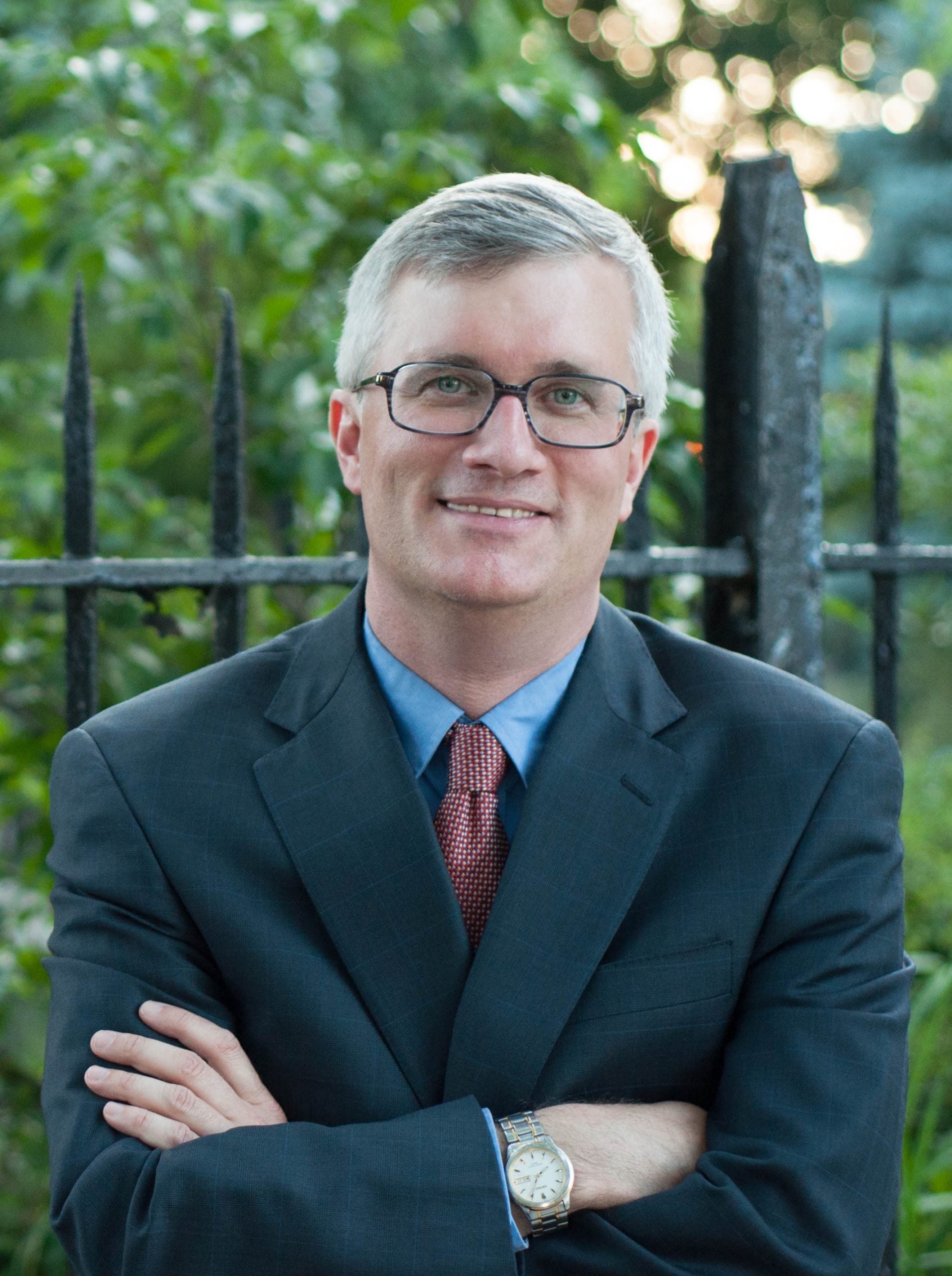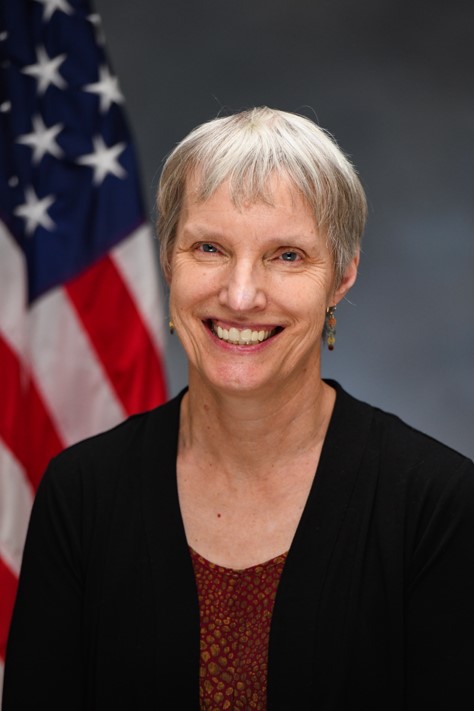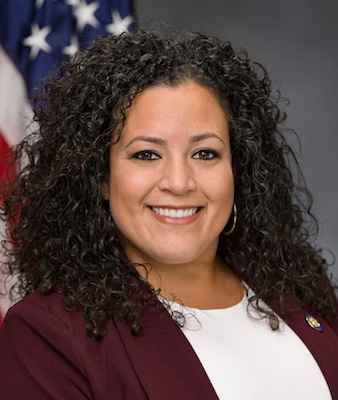| Date of Action |
Assembly Actions -
Lowercase Senate Actions - UPPERCASE |
|---|---|
| Jun 09, 2025 |
print number 5605c |
| Jun 09, 2025 |
amend (t) and recommit to consumer protection |
| May 23, 2025 |
print number 5605b |
| May 23, 2025 |
amend and recommit to consumer protection |
| Mar 20, 2025 |
print number 5605a |
| Mar 20, 2025 |
amend (t) and recommit to consumer protection |
| Feb 25, 2025 |
referred to consumer protection |
Senate Bill S5605A
2025-2026 Legislative Session
Sponsored By
(D) 27th Senate District
Current Bill Status - In Senate Committee Consumer Protection Committee
Actions
Bill Amendments
2025-S5605 - Details
- Current Committee:
- Senate Consumer Protection
- Law Section:
- General Business Law
- Laws Affected:
- Add §396-uu, Gen Bus L
2025-S5605 - Sponsor Memo
BILL NUMBER: S5605
SPONSOR: KAVANAGH
TITLE OF BILL:
An act to amend the general business law, in relation to requiring all
washing machines be sold with a microfiber filtration system and proper
notice of such system
PURPOSE OR GENERAL IDEA OF BILL:
This bill would require all washing machines to be sold with a microfi-
ber filtration system and proper notice of such a system.
SUMMARY OF PROVISIONS:
Section one of the bill amends the general business law to add a new
section 395-c. Subsection 1 defines the relevant terms. Subsection 2
outlines new requirements for washing machines to include a microfiber
filtration system. Subsection 3 outlines guidelines for manufacturers of
washing machines, distributors, and retailers. Subsection 4 outlines
the civil penalty for violations of this section. Subsection 5 outlines
2025-S5605 - Bill Text download pdf
S T A T E O F N E W Y O R K
________________________________________________________________________
5605
2025-2026 Regular Sessions
I N S E N A T E
February 25, 2025
___________
Introduced by Sen. KAVANAGH -- read twice and ordered printed, and when
printed to be committed to the Committee on Consumer Protection
AN ACT to amend the general business law, in relation to requiring all
washing machines be sold with a microfiber filtration system and prop-
er notice of such system
THE PEOPLE OF THE STATE OF NEW YORK, REPRESENTED IN SENATE AND ASSEM-
BLY, DO ENACT AS FOLLOWS:
Section 1. The general business law is amended by adding a new section
395-c to read as follows:
§ 395-C. SALE OF WASHING MACHINES. 1. FOR THE PURPOSES OF THIS
SECTION, THE FOLLOWING TERMS SHALL HAVE THE FOLLOWING MEANINGS:
(A) "MICROFIBER FILTRATION SYSTEM" MEANS A FILTRATION UNIT THAT IS
ACTIVE ACROSS ALL WASHING CYCLES AND MEETS EITHER OF THE FOLLOWING: (I)
THE UNIT IS INTEGRATED INTO THE WASHING MACHINE DESIGN AS A BUILT-IN
FILTER; OR (II) THE UNIT IS INCLUDED AS AN IN-LINE FILTER AND IS PACK-
AGED, SOLD, AND INSTALLED WITH THE WASHING MACHINE; AND
(B) "WASHING MACHINE" MEANS A MACHINE DESIGNED AND USED FOR WASHING
CLOTHES AND LINEN.
2. ON AND AFTER JANUARY FIRST, TWO THOUSAND TWENTY-NINE, A NEW WASHING
MACHINE SHALL NOT BE SOLD OR OFFERED FOR SALE IN THE STATE FOR RESIDEN-
TIAL, COMMERCIAL, OR STATE USE UNLESS THE WASHING MACHINE MEETS BOTH OF
THE FOLLOWING REQUIREMENTS:
(A) CONTAINS A MICROFIBER FILTRATION SYSTEM WITH A MESH SIZE OF NOT
GREATER THAN ONE HUNDRED MICROMETERS; AND
(B) BEARS A CONSPICUOUS LABEL THAT IS VISIBLE TO THE CONSUMER, IN THE
FORM OF A STICKER OR ANY OTHER LABEL TYPE, THAT INCLUDES THE FOLLOWING
STATEMENT: "NOTICE: THIS WASHING MACHINE CONTAINS A FILTER TO CAPTURE
MICROFIBERS. CHECK FILTER REGULARLY AND DISPOSE OF CAPTURED LINT IN A
WASTE BIN."
3. (A) A MANUFACTURER OF A WASHING MACHINE THAT IS SUBJECT TO THE
REQUIREMENTS OF SUBDIVISION TWO OF THIS SECTION SHALL PROVIDE EACH
EXPLANATION--Matter in ITALICS (underscored) is new; matter in brackets
[ ] is old law to be omitted.
LBD08178-01-5
co-Sponsors
(D, WF) 48th Senate District
2025-S5605A - Details
- Current Committee:
- Senate Consumer Protection
- Law Section:
- General Business Law
- Laws Affected:
- Add §396-uu, Gen Bus L
2025-S5605A - Sponsor Memo
BILL NUMBER: S5605A
SPONSOR: KAVANAGH
TITLE OF BILL:
An act to amend the general business law, in relation to requiring wash-
ing machines to meet certain filtration system requirements
PURPOSE OR GENERAL IDEA OF BILL:
This bill would require all washing machines to be sold with a microfi-
ber filtration system and proper notice of such a system.
SUMMARY OF PROVISIONS:
Section one of the bill amends the general business law to add a new
section 395-c. Subsection 1 defines the relevant terms. Subsection 2
outlines new requirements for washing machines to include a microfiber
filtration system. Subsection 3 outlines guidelines for manufacturers of
washing machines, distributors, and retailers. Subsection 4 outlines
the civil penalty for violations of this section. Subsection 5 outlines
the general rights, actions, and defenses available for those subject to
2025-S5605A - Bill Text download pdf
S T A T E O F N E W Y O R K
________________________________________________________________________
5605--A
2025-2026 Regular Sessions
I N S E N A T E
February 25, 2025
___________
Introduced by Sen. KAVANAGH -- read twice and ordered printed, and when
printed to be committed to the Committee on Consumer Protection --
committee discharged, bill amended, ordered reprinted as amended and
recommitted to said committee
AN ACT to amend the general business law, in relation to requiring wash-
ing machines to meet certain filtration system requirements
THE PEOPLE OF THE STATE OF NEW YORK, REPRESENTED IN SENATE AND ASSEM-
BLY, DO ENACT AS FOLLOWS:
Section 1. This act shall be known and may be cited as the "washing
machine microfiber filter act".
§ 2. The general business law is amended by adding a new section 396-
uu to read as follows:
§ 396-UU. SALE OF WASHING MACHINES. 1. DEFINITIONS. AS USED IN THIS
SECTION, THE FOLLOWING TERMS SHALL HAVE THE FOLLOWING MEANINGS:
A. "MICROFIBER FILTRATION SYSTEM" MEANS A FILTRATION UNIT THAT IS
ACTIVE ACROSS ALL WASHING CYCLES AND MEETS EITHER OF THE FOLLOWING:
(I) THE UNIT IS INTEGRATED INTO THE WASHING MACHINE DESIGN AS A BUILT-
IN FILTER; OR
(II) THE UNIT IS INCLUDED AS AN IN-LINE FILTER AND IS PACKAGED, SOLD,
AND INSTALLED WITH THE WASHING MACHINE; AND
B. "WASHING MACHINE" MEANS A MACHINE DESIGNED AND USED FOR WASHING
CLOTHES AND LINEN.
2. A. ON AND AFTER JANUARY FIRST, TWO THOUSAND TWENTY-SIX, ALL NEW
WASHING MACHINES OFFERED FOR SALE IN THE STATE SHALL CONTAIN A BUILT-IN
OR IN-LINE MICROFIBER FILTRATION SYSTEM WITH A MESH SIZE OF NOT GREATER
THAN ONE HUNDRED MICROMETERS.
B. ALL WASHING MACHINES SOLD IN THE STATE ON OR AFTER JANUARY FIRST,
TWO THOUSAND TWENTY-SIX SHALL BEAR A CONSPICUOUS LABEL THAT IS VISIBLE
TO THE CONSUMER, IN THE FORM OF A STICKER OR ANY OTHER LABEL TYPE, THAT
INCLUDES THE FOLLOWING STATEMENT: "NOTICE: THIS WASHING MACHINE CONTAINS
EXPLANATION--Matter in ITALICS (underscored) is new; matter in brackets
[ ] is old law to be omitted.
LBD08178-02-5
S. 5605--A 2
co-Sponsors
(D) 34th Senate District
(D, WF) 48th Senate District
2025-S5605B - Details
- Current Committee:
- Senate Consumer Protection
- Law Section:
- General Business Law
- Laws Affected:
- Add §396-uu, Gen Bus L
2025-S5605B - Sponsor Memo
BILL NUMBER: S5605B
SPONSOR: KAVANAGH
TITLE OF BILL:
An act to amend the general business law, in relation to requiring wash-
ing machines to meet certain filtration system requirements
PURPOSE OR GENERAL IDEA OF BILL:
This bill would require all washing machines to be sold with a microfi-
ber filtration system and proper notice of such a system.
SUMMARY OF PROVISIONS:
Section one of the bill provides that this act shall be known as the
"washing machine microfiber filter act".
Section two of the bill amends the general business law to add a new
section 396-uu. Subsection 1 defines the relevant terms. Subsection 2
outlines new requirements for washing machines to include a microfiber
filtration system. Subsection 3 outlines guidelines for manufacturers of
2025-S5605B - Bill Text download pdf
S T A T E O F N E W Y O R K
________________________________________________________________________
5605--B
2025-2026 Regular Sessions
I N S E N A T E
February 25, 2025
___________
Introduced by Sens. KAVANAGH, MAY -- read twice and ordered printed, and
when printed to be committed to the Committee on Consumer Protection
-- committee discharged, bill amended, ordered reprinted as amended
and recommitted to said committee -- committee discharged, bill
amended, ordered reprinted as amended and recommitted to said commit-
tee
AN ACT to amend the general business law, in relation to requiring wash-
ing machines to meet certain filtration system requirements
THE PEOPLE OF THE STATE OF NEW YORK, REPRESENTED IN SENATE AND ASSEM-
BLY, DO ENACT AS FOLLOWS:
Section 1. This act shall be known and may be cited as the "washing
machine microfiber filter act".
§ 2. The general business law is amended by adding a new section 396-
uu to read as follows:
§ 396-UU. SALE OF WASHING MACHINES. 1. DEFINITIONS. AS USED IN THIS
SECTION, THE FOLLOWING TERMS SHALL HAVE THE FOLLOWING MEANINGS:
A. "MICROFIBER FILTRATION SYSTEM" MEANS A FILTRATION UNIT THAT IS
ACTIVE ACROSS ALL WASHING CYCLES AND MEETS EITHER OF THE FOLLOWING:
(I) THE UNIT IS INTEGRATED INTO THE WASHING MACHINE DESIGN AS A BUILT-
IN FILTER; OR
(II) THE UNIT IS INCLUDED AS AN IN-LINE FILTER AND IS PACKAGED, SOLD,
AND INSTALLED WITH THE WASHING MACHINE; AND
B. "WASHING MACHINE" MEANS A MACHINE DESIGNED AND USED FOR WASHING
CLOTHES AND LINEN.
2. A. ON AND AFTER JANUARY FIRST, TWO THOUSAND TWENTY-EIGHT, ALL NEW
WASHING MACHINES OFFERED FOR SALE IN THE STATE SHALL CONTAIN A BUILT-IN
OR IN-LINE MICROFIBER FILTRATION SYSTEM WITH A MESH SIZE OF NOT GREATER
THAN ONE HUNDRED MICROMETERS.
B. ALL NEW WASHING MACHINES SOLD IN THE STATE ON OR AFTER JANUARY
FIRST, TWO THOUSAND TWENTY-EIGHT SHALL BEAR A CONSPICUOUS LABEL THAT IS
VISIBLE TO THE CONSUMER, IN THE FORM OF A STICKER OR ANY OTHER LABEL
EXPLANATION--Matter in ITALICS (underscored) is new; matter in brackets
[ ] is old law to be omitted.
LBD08178-03-5
co-Sponsors
(D) 34th Senate District
(D, WF) 48th Senate District
2025-S5605C (ACTIVE) - Details
- Current Committee:
- Senate Consumer Protection
- Law Section:
- General Business Law
- Laws Affected:
- Add §396-uu, Gen Bus L
2025-S5605C (ACTIVE) - Sponsor Memo
BILL NUMBER: S5605C
SPONSOR: KAVANAGH
TITLE OF BILL:
An act to amend the general business law, in relation to enacting the
"washing machine microfiber filtration act"
PURPOSE OR GENERAL IDEA OF BILL:
This bill would require all washing machines to be sold with a microfi-
ber filtration system and proper notice of such a system.
SUMMARY OF PROVISIONS:
Section one of the bill provides that this act shall be known as the
"washing machine microfiber filter act".
Section two of the bill amends the general business law to add a new
section 396-uu. Subsection 1 defines the relevant terms. Subsection 2
outlines new requirements for washing machines sold after two thousand
thirty to include a microfiber filtration system, with a conspicuous
2025-S5605C (ACTIVE) - Bill Text download pdf
S T A T E O F N E W Y O R K
________________________________________________________________________
5605--C
2025-2026 Regular Sessions
I N S E N A T E
February 25, 2025
___________
Introduced by Sens. KAVANAGH, FERNANDEZ, MAY -- read twice and ordered
printed, and when printed to be committed to the Committee on Consumer
Protection -- committee discharged, bill amended, ordered reprinted as
amended and recommitted to said committee -- committee discharged,
bill amended, ordered reprinted as amended and recommitted to said
committee -- committee discharged, bill amended, ordered reprinted as
amended and recommitted to said committee
AN ACT to amend the general business law, in relation to enacting the
"washing machine microfiber filtration act"
THE PEOPLE OF THE STATE OF NEW YORK, REPRESENTED IN SENATE AND ASSEM-
BLY, DO ENACT AS FOLLOWS:
Section 1. This act shall be known and may be cited as the "washing
machine microfiber filtration act".
§ 2. The general business law is amended by adding a new section 396-
uu to read as follows:
§ 396-UU. SALE OF WASHING MACHINES; MICROFIBER FILTRATION. 1. DEFI-
NITIONS. AS USED IN THIS SECTION, THE FOLLOWING TERMS SHALL HAVE THE
FOLLOWING MEANINGS:
A. "MICROFIBER FILTRATION SYSTEM" MEANS A FILTER OR OTHER FEATURE, OR
A SERIES OF FILTERS OR OTHER FEATURES, BUILT INTO A WASHING MACHINE OR
PACKAGED, SOLD, AND INSTALLED WITH A WASHING MACHINE THAT REMOVES FROM
WATER USED ACROSS ALL WASHING CYCLES NINETY PERCENT OR MORE OF FIBERS
AND MICROFIBERS THAT ARE ONE HUNDRED MICROMETERS OR LARGER.
B. "WASHING MACHINE" MEANS A MACHINE DESIGNED AND USED FOR WASHING
CLOTHES AND LINEN.
2. A. ON AND AFTER JANUARY FIRST, TWO THOUSAND THIRTY, NO NEW WASHING
MACHINES SHALL BE OFFERED FOR SALE OR SOLD IN THE STATE WITHOUT A MICRO-
FIBER FILTRATION SYSTEM.
B. ALL NEW WASHING MACHINES SOLD IN THE STATE WITH A MICROFIBER
FILTRATION SYSTEM ON OR AFTER JANUARY FIRST, TWO THOUSAND THIRTY SHALL
BEAR A CONSPICUOUS STICKER OR OTHER LABEL THAT IS VISIBLE TO THE CONSUM-
EXPLANATION--Matter in ITALICS (underscored) is new; matter in brackets
[ ] is old law to be omitted.
LBD08178-05-5
Comments
Open Legislation is a forum for New York State legislation. All comments are subject to review and community moderation is encouraged.
Comments deemed off-topic, commercial, campaign-related, self-promotional; or that contain profanity, hate or toxic speech; or that link to sites outside of the nysenate.gov domain are not permitted, and will not be published. Attempts to intimidate and silence contributors or deliberately deceive the public, including excessive or extraneous posting/posts, or coordinated activity, are prohibited and may result in the temporary or permanent banning of the user. Comment moderation is generally performed Monday through Friday. By contributing or voting you agree to the Terms of Participation and verify you are over 13.
Create an account. An account allows you to sign petitions with a single click, officially support or oppose key legislation, and follow issues, committees, and bills that matter to you. When you create an account, you agree to this platform's terms of participation.



June 5, 2025
Re: Support for S5605A / A4716A – Microfiber Filtration Requirements for Washing Machines
Chair, Consumer Protection Committee
New York State Senate
Legislative Office Building, Room 804
Albany, NY 12247
Dear Senator May and Members of the Consumer Protection Committee;
On behalf of the 5 Gyres Institute, I write in strong support of S5605A / A4716A, which would require all new residential and commercial washing machines sold in New York to include integrated microfiber filtration systems. As an environmental nonprofit dedicated to advancing science-based solutions to plastic pollution, we view this bill as a critical step in protecting public health, ecosystems, and water quality.
Microfibers are one of the most prevalent and persistent forms of microplastic pollution. These particles shed during washing, drying, and use of synthetic textiles are transported by air and water and have been found in oceans, freshwater, soil, the Arctic, and even Mount Everest¹. They can persist in the environment for decades or longer due to their chemical treatments, coatings, and resistance to degradation².
Since 1950, an estimated 4.8 million metric tons of synthetic microfibers have entered the environment³. Wastewater treatment plants emit between 30,000 and 15 million microfibers per day even after standard filtration³. Biosolids containing trapped microfibers are often applied to farmland, introducing additional pollutants to soils⁴. Microfibers are also transported via air and are the most common microparticles found in human lungs⁵.
Microfibers accumulate in fish, birds, terrestrial animals, and humans, with studies detecting them in trout, salmon, anchovies, white suckers, black rockfish, and various invertebrates⁶⁻⁷. In humans, microfibers have been found in the lungs, placenta, liver, and brain, showing the capacity to translocate across tissues and organs⁸⁻¹⁰. Inhalation in indoor environments, especially poorly ventilated spaces can result in exposure of up to 140 particles per kilogram of body weight per day¹¹.
These fibers can cause gut blockages, gill damage, inflammation, and endocrine disruption, and can act as chemical carriers, absorbing pesticides, PAHs, heavy metals, and additives commonly used in textile production¹²⁻¹⁵. Their irregular shape and diverse chemical makeup complicate toxicological assessments and heighten long-term risks to human and ecosystem health.
Filtration is a proven solution. Washing machine filters can capture up to 90% of shed fibers before they enter wastewater systems¹⁶. Real-world pilots show these technologies are effective in reducing citywide emissions¹⁷. A recent cost analysis commissioned by The Nature Conservancy found that incorporating microfiber filters at the manufacturing stage would increase the price of a new residential machine by only $14–$20, with costs expected to fall as adoption scales.
By requiring integrated filtration on new washing machines, S5605A / A4716A takes a vital upstream approach to preventing microplastic pollution before it begins. New York has the opportunity to lead by example and reduce microfiber emissions at their source—protecting our waterways, wildlife, and communities.
5 Gyres is proud to support this legislation and urges swift passage. Thank you for your leadership in tackling this urgent issue.
Sincerely,
Alison Waliszewski
Director of Regional Policy & Program Development
5 Gyres Institute
References
¹ Stanton et al. Sci Total Environ (2019).
² Lacasse & Baumann. Textile Chemicals (Springer, 2004).
³ Tao et al. Environ Sci Technol Lett (2022).
⁴ Kapp & Miller. PLoS ONE (2020).
⁵ Saini et al. Indoor Air (2017).
⁶ Munno et al. Conserv Biol (2021).
⁷ Lasdin et al. PeerJ (2023).
⁸ Ragusa et al. Environ Int (2021).
⁹ Horvatits et al. eBioMedicine (2022).
¹⁰ Amato-Lourenço et al. JAMA (2024).
¹¹ Saini et al. Indoor Air (2017).
¹² Athey et al. Water (2022).
¹³ Schellenberger et al. Environ Sci Technol (2019).
¹⁴ Xue et al. Environ Sci Technol (2017).
¹⁵ Lacasse & Baumann. Textile Chemicals (Springer, 2004).
¹⁶ Gavigan et al. PLoS ONE (2020).
¹⁷ Michishita et al. Environ Pollut (2023).